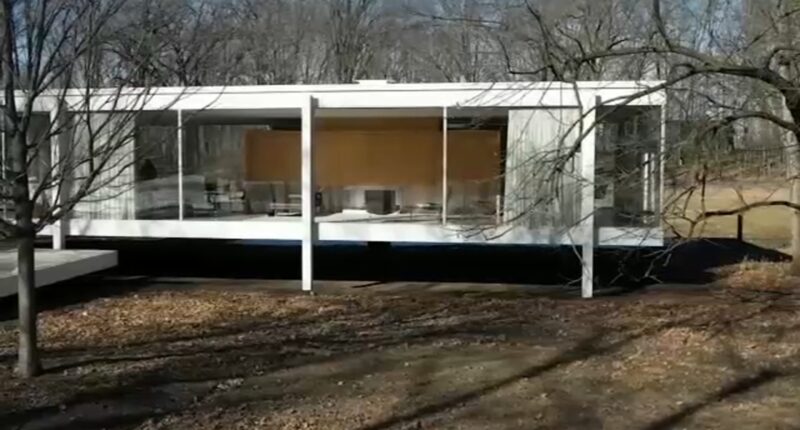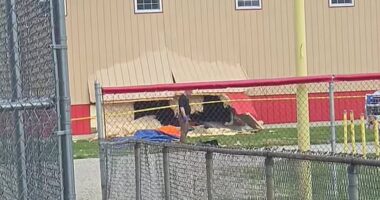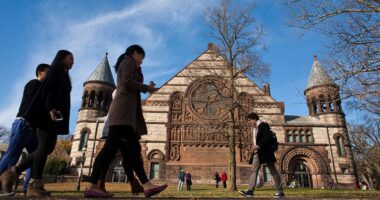PLANO, Ill. (WLS) — There’s an urgency among some people to take one last trip to places that could soon be erased by climate change.
In Plano, a town located 60 miles southwest of Chicago, stands a remarkable architectural wonder beside the banks of the Fox River, where it resides near possible sites that our ancient ancestors once inhabited.
The structure in question is none other than Edith Farnsworth’s countryside retreat. According to Scott Mehaffey, the Executive Director of the Dr. Edith Farnsworth House Historic Site, it represents a blend of natural, cultural, and agrarian landscapes.
Farnsworth commissioned Ludwig Mies van der Rohe, known for his “less is more” principal, to design her country retreat in 1945.
The simple and visually minimalistic structure is in fact a complex masterpiece that’s become a mecca for architects.
“These large panes of glass are the immediate connection to nature,” said Mehaffey.
Mies’s virtually see-through glass and steel house was built on stilts to protect it from flooding.
The house, designed by Mies van der Rohe, was strategically constructed in a floodplain. Concerns about natural disasters like tornadoes and floods were on the minds of both Mies and Farnsworth. “The house sits 5 feet 3 inches above ground level due to past flooding incidents,” noted Mehaffey. Despite being flooded during its construction, the house was engineered to withstand such challenges and is a testament to its durability.
In a world of climate change, the flooding along the Fox River Valley will only get more intense and more frequent. The Farnsworth house may not be washed off its foundation but it’s the cultural significance in the layers below, not only of this site, but sites all across Illinois conservationists are most concerned about preserving.
“The site is a palimpsest,” explained Mehaffey. “There are all these layers of history and Mississippian culture. And even earlier, through the extended tribal occupation by the prairie band Potawatomi.”
Andrew White is a research archeologist with the Illinois State Archeological Survey and Prairie Research at the at the University of Illinois in Champaign.
“People have lived in this part of the world for 13,000 years or more. All the traces that they left behind, all these material remains, those are no longer being produced. So there is a finite set of those. As we lose those, they are never coming back,” said White.
White is part of a team of authors of a study that looked at the devastating effects flooding, erosion and development have on indigenous lands.
“Sites can get washed into a river by flooding. They can be swallowed up by the construction of a strip mall. They can be slowly worn away as fields erode and all that sediment gets washed into the river,” said White.
Most of these heritage sites remain underground, and it’s a race against time to find and preserve them. Survey data shows there’s about one heritage site for every 35 acres in Illinois. So White suspects the entire population of pre contact sites in the state is about a million. The most vulnerable of these are also the oldest. Paleoindigenous sites from 13,000 years ago, small hunter-gatherer encampments build of wood, with early, hard to identify tools.
“We’ve probably already lost 5, 10 or 15% of that,” said White. “We have lost a really significant chunk of our cultural heritage, both the information value and what those places mean to people. They’re gone.”
That’s why White and his team point to places like Farnsworth House and Monks Mound in Cahokia, near St. Louis. The prehistoric earthen mound has been slumping, and experiencing accelerated erosion, due to the more frequent and severe spring flooding in the wetlands surrounding the site
“There are large spectacular mountain sites like Cahokia. There are historic structures and historic districts that have importance because something important happened there or somebody famous was there,” White said. “There are places like the Farnsworth House here that is just a really interesting, unique kind of architectural expression that, you know, is worth saving.”
Farnsworth House is now a part of the National Trust for Historic Preservation. The organization has 28 historic sites nationwide…including four other homes.
“We’re probably facing some of the biggest conservation challenges here at Farnsworth,” said Mehaffey. “So not just the flooding but also invasive species. Because we’re relatively close to the Chicago metro area, so we have Asian honeysuckle, European buckthorn and then things that have become invasive since really in the 1970s and 80s.”
And as efforts continue to keep the Farnsworth House intact, staffers hope visitors will see what Dr. Farnsworth saw.
“I think one of the things we’re trying to do is get people to think about why the house was built in the first place. Dr. Farnsworth was an avid reader and writer. She loved history. She loved learning about ancient cultures, ancient civilization. 01;03;17;42 So it’s a nature retreat. // And we’re trying to get people to appreciate that when they come here and really think about the house is just really kind of a minimalist shelter. But it’s really all about nature. It’s about what’s happening around you outside.”
This story is part of our Climate Ready series – a collaboration between ABC News and the ABC Owned Television Stations focused on providing practical solutions to help you and your family adapt to extreme weather events and the current challenges of climate change.
Copyright © 2025 WLS-TV. All Rights Reserved.
















